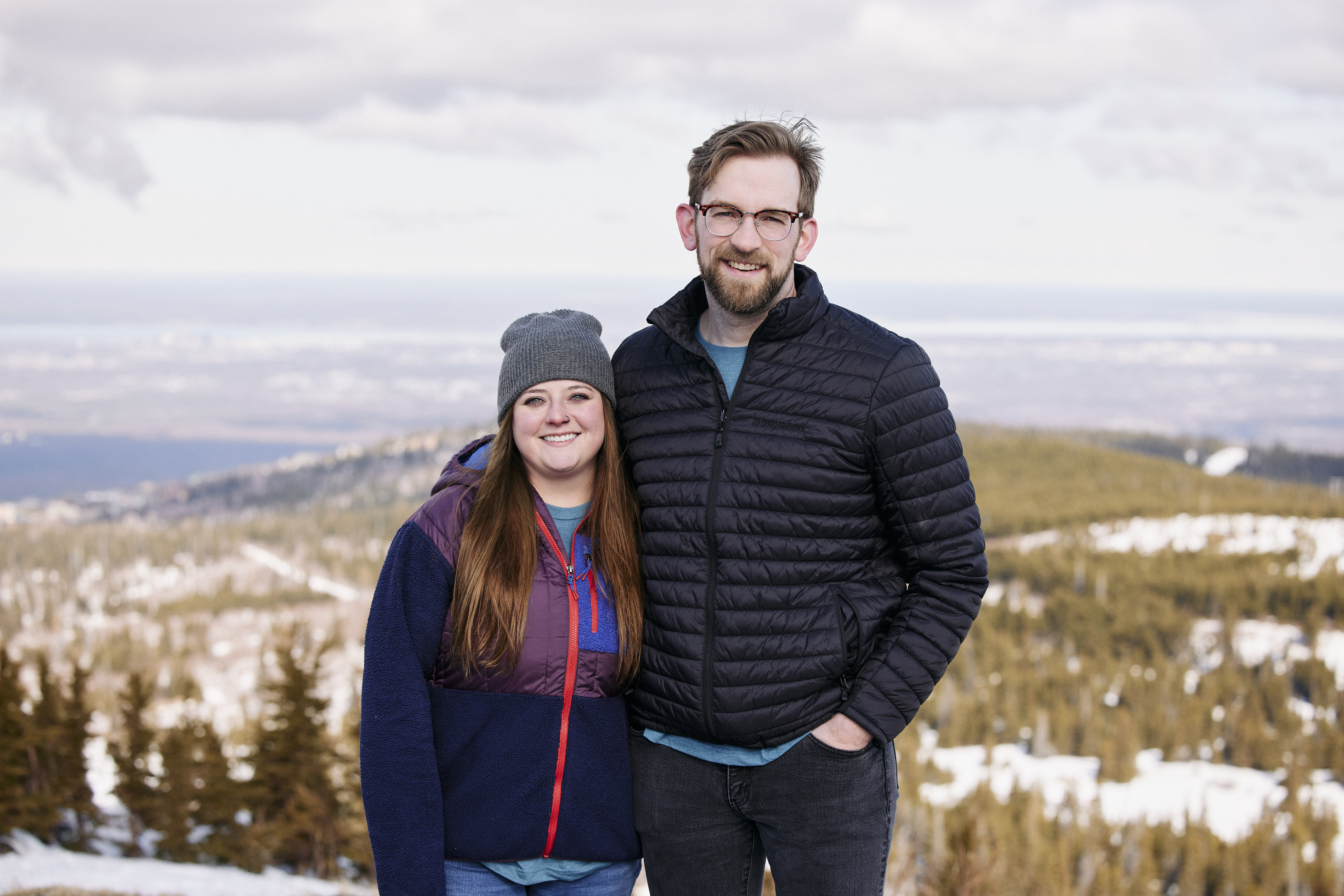
ANCHORAGE, Alaska (BP) — Winter in Anchorage, Alaska, is cold. The average January temperature doesn’t break double digits. At times, it drops to negative 30 degrees.
But with as much as 20 hours without sunlight during some winter nights, it’s the darkness that really catches newcomers to the city by surprise.
“Just like life is hard for the people here, it’s hard for churches to survive and thrive here,” said NAMB missionary Philip Coleman.

The harsh surroundings of Alaska can be tough on existing churches and church plants alike.
But Coleman has seen hope as dying churches cross generational lines to partner with young church plants. True North Church, where Coleman now pastors, recently joined forces with Muldoon Road Baptist Church, a congregation that typified the struggles that aging, Alaskan churches face.
“There is a category of church in Alaska that is built on a ministry model that was probably effective from the late 1960s through the late 1980s,” Coleman said. “For whatever reason, at the close of that chapter of ministry philosophy, the baton was never passed. And we’ve now come to the point where we are probably two full cycles removed from the time when that baton needed to be handed off.”

At one time, Muldoon Road thrived. In the 1970s and 80s, thousands were enrolled in Sunday School, and hundreds attended worship service. Young families, military couples and Alaska natives were coming to faith and growing in Christlikeness.
But over the last 15 years, the situation changed. Like many other aging congregations in North America, Muldoon Road found itself no longer looking like the neighborhood. The congregation had gotten older. Attendance declined.
Muldoon Road was dying.
At about that time, Coleman met with Muldoon Road’s youngest deacon, 82-year-old Russ Mabry. True North Church, a young church of mostly people in their 20s and 30s, still needed a building where it could regularly meet. Constant moving caused frustration for the church’s visitors.
Mabry and the other leaders at Muldoon Road didn’t want to die and have their building lost for ministry purposes. They knew the church didn’t have many more months, so the two discussed the possibility of a merger.

It wasn’t the first time Coleman had a conversation with an older congregation about merging. Learning from these past conversations, he started with the toughest parts of the merger. Each time, Mabry responded, “No big deal.”
“[Russ] was answering our prayers about a permanent location, stability, and a base camp in the community out of which to do ministry and impact people. And as we prayed and discussed and prayed and discussed, eventually in early December, we all got on the same page. Muldoon Road Baptist extended an offer to merge with us with no terms, no red tape, no conditions. And we accepted that with no terms and no conditions as well.”
Starting in January 2022, the two churches officially became one, and the 20 remaining members of Muldoon Road began to integrate within True North Church.
Merging two churches can be like a marriage, where each side must learn about the other and slowly grow together. Coleman remembers the communion service, not long after the merger, where everything seemed to click.

“We didn’t talk about unity,” Coleman said. “There wasn’t a long sermon about how this communion was going to bind us together. But I remember the difference between when that service began — there were still clearly two separate groups in the room — and the immediate organic connection that we could feel in the air as soon as we were done coming to the Lord’s table together. It was the fulfillment of every promise that [the Lord] makes if we’ll be faithful to remember him and build our identity on him.”
As the pastor, Coleman said bringing the two churches together has been “a beautiful process” as he’s watched two very different groups of people unite to “eat together, dwell together and do life together.”

“Because God designed families as intergenerational, we’ve seen immense benefit on both ends of the spectrum,” Coleman said. “We are a healthier, more mature but also are a more agile, lively and ready-to-go church than either of those previous churches could have been on their own.”
Now Coleman hopes to help other churches like Muldoon Road that are struggling to engage their neighborhoods and nearing death. True North is becoming a hub to help dying churches find new life. Alongside that initiative is Coleman’s vision to equip church planters to thrive in Alaska. Through his relationship with NAMB’s Send Network, True North Church is creating ministry residencies where aspiring planters can come and learn how to reach people in the state.
“Now we have access to a pipeline of people who can go and help these churches,” Coleman said. “It gives us access to resources so that we can put together residences and actually train people to be qualified to serve in a very unique place. I don’t think there’s a seminary or a residence anywhere else that can get you ready for Alaska. You need to be here for a year or more to know this place.”

Thanks to the generosity of Southern Baptists and their gifts to the Annie Armstrong Easter Offering®, Coleman and his congregation can model what it looks like to pass the ministry baton and reach a new generation of Alaskans.
“This is what partnership and cooperation and passing the baton look like: we’re a church with multiple generations of people who love Jesus and love Alaska,” Coleman said. “And now we all have this vision of one day, very soon, becoming a church planting hub for the entire state. God has started something great in Alaska, and He’s put all of us here together to share the gospel with every person who lives in this cold, dark, beautiful place.”

The Annie Armstrong Easter Offering® provides half of NAMB’s annual budget, and 100 percent of the proceeds go to the field. The offering is used on the field for training, support and care for missionaries, like Phillip Coleman, and for evangelism resources.
Published March 8, 2023
